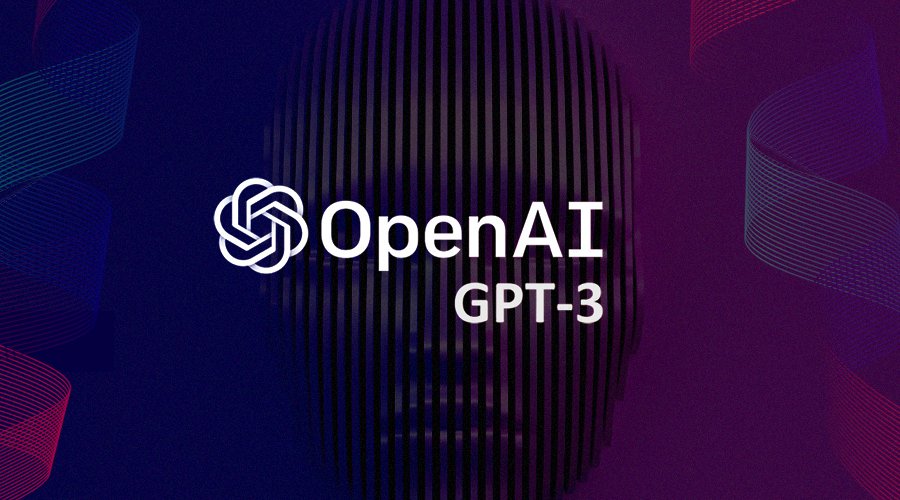AI language models could help diagnose schizophrenia
SOURCE: HTTPS://WWW.SCIENCEDAILY.COM/
OCT 09, 2023
NEW VERSION OF GPT-3: A GAME-CHANGING LANGUAGE MODEL BY OPEN AI
SOURCE: ANALYTICSINSIGHT.NET
FEB 14, 2022

GPT-3 (Generative Pre-trained Transformer 3) is a language model by OpenAI, an artificial intelligence research laboratory in San Francisco. It is the 3rd version release and the upgraded version of GPT-2. Version 3 takes the GPT model to a whole new level as it’s trained on a whopping 175 billion parameters (which is over 10x the size of its predecessor, GPT-2). The 175-billion parameter deep learning model is capable of producing human-like text and was trained on large text datasets with hundreds of billions of words.
This language model was created to be more robust than GPT-2 in that it is capable of handling more niche topics. GPT-2 was known to have poor performance when given tasks in specialized areas such as music and storytelling. GPT-3 can now go further with tasks such as answering questions, writing essays, text summarization, language translation, and generating computer code.
TOP THREE EXTRAORDINARY APPLICATIONS OF DEEP LEARNING FOR COMPUTER VISION
DEEPMIND DISCOVERS NEW CORRELATION BETWEEN NEUROSCIENCE AND AI
DEEP LEARNING SOFTWARE TOOLS ARE CONTRIBUTING TO MEDICAL RESEARCH
OpenAI is a pioneer in artificial intelligence research that was initially funded by titans like SpaceX and Tesla founder Elon Musk, venture capitalist Peter Thiel, and LinkedIn co-founder Reid Hoffman. The nonprofit’s mission is to guide Artificial Intelligence. development responsibly, away from abusive and harmful applications. Besides text generation, OpenAI has also developed a robotic hand that can teach itself simple tasks, systems that can beat pro players of the strategy video game Dota 2, and algorithms that can incorporate human input into their learning processes.
How GPT-3 works
GPT-3 is one of the best language models that are basically deep learning models capable of producing a sequence of text given an input sequence. These language models are designed for text generation tasks such as question-answering, text summarization, and machine translation. Language models work uniquely in contrast to LSTMs by utilizing different units called consideration blocks to realize which parts of a text arrangement are critical to focus on.
GPT-3 is the third generation of the GPT language models made by OpenAI. The primary contrast that separates GPT-3 from past models is its size. GPT-3 contains 175 billion boundaries, making it multiple times as extensive as GPT-2, and multiple times as Microsoft’s Turing NLG model. Alluding to the transformer design portrayed in my past article recorded above, GPT-3 has 96 consideration blocks that each contain 96 consideration heads. At the end of the day, GPT-3 is essentially a monster transformer model.
Why GPT-3 is so strong?
GPT-3 has stood out as truly newsworthy since the previous summer since it can play out a wide assortment of regular language undertakings and produces human-like text. The undertakings that GPT-3 can perform incorporate, yet are not restricted to:
Based on the tasks that GPT-3 can perform, we can consider it a model that can perform understanding appreciation and composing undertakings at a close human level with the exception of that it has seen more text than any human will at any point peruse in the course of their life. For this reason, GPT-3 is so strong. Whole new businesses have been made with GPT-3 since we can consider it a broadly useful swiss armed force blade for tackling a wide assortment of issues in natural language processing.
Limitations
How you can utilize GPT-3?
Presently, GPT-3 is not open-source, and OpenAI chose to rather create the model accessible through a business API that you can see here. This API is in private beta and that implies that you should finish up the OpenAI API Waitlist Form to join the shortlist to utilize the API.
OpenAI additionally has an exceptional program for scholastic analysts who need to utilize GPT-3. To utilize GPT-3 for scholastic exploration, you should finish up the Academic Access Application.
While GPT-3 is not open-source or freely accessible, its ancestor, GPT-2 is open-source and available through Hugging Face’s transformers library. Go ahead and look at the documentation for Hugging Face’s GPT-2 execution to utilize this more modest yet still powerful language model all things considered.
LATEST NEWS
Artificial Intelligence
Eerily realistic: Microsoft’s new AI model makes images talk, sing
APR 20, 2024
WHAT'S TRENDING


Data Science
5 Imaginative Data Science Projects That Can Make Your Portfolio Stand Out
OCT 05, 2022

SOURCE: HTTPS://WWW.SCIENCEDAILY.COM/
OCT 09, 2023
SOURCE: HTTPS://WWW.THEROBOTREPORT.COM/
SEP 30, 2023
SOURCE: HTTPS://WWW.SCIENCEDAILY.COM/
AUG 08, 2023
SOURCE: HOUSTON.INNOVATIONMAP.COM
OCT 03, 2022
SOURCE: MEDCITYNEWS.COM
OCT 06, 2022